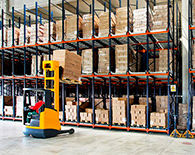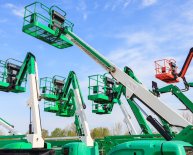
Temporary work platforms
(a) Scaffolds shall be provided for all work that cannot be done safely by employees standing on permanent or solid construction at least 20 inches wide, except where such work can be safely done from ladders.
Exceptions:
1. Work of a limited nature and of short duration when the permanent or solid construction is less than 20 inches in width and the fall distance does not exceed 15 feet in height and provided adequate risk control is recognized and maintained under competent supervision.
2. Work of a short duration from joists or similar members at 2 feet or closer centers, planks resting on these members forming a plank platform 12 inches wide or equivalent protection.
(b) Scaffold Design and Construction.
(1) Scaffolds shall be constructed of wood or other suitable materials such as steel or aluminum members of known strength characteristics. Where materials other than wood are used, or where scaffold designs differ from those specified in these Orders, the scaffold and its parts must provide a degree of strength, rigidity and safety equivalent to that provided by the described scaffold it replaces.
Even in this context, we can discuss Graphic Design School.
(2) Each scaffold shall be designed and constructed using a dead load safety factor that will ensure the scaffold supports, without failure, its own weight and 4 times the maximum intended working (live) load applied or transmitted to it. Maximum intended working loads shall be as follows:
(A) Light-duty scaffolds: 25 pounds per square foot of work platform.
Exception: Light-duty interior scaffolds shall adhere to the loading requirements contained in Section 1640(c)(1).
(B) Medium-duty scaffolds: 50 pounds per square foot of work platform.
(C) Heavy-duty scaffolds: 75 pounds per square foot of work platform.
(D) Special-duty scaffolds: exceeding 75 pounds per square foot of work platform as determined by a qualified person or a Civil Engineer currently registered in the State of California and experienced in scaffold design.
(E) Engineered scaffolds: as determined by a Civil Engineer currently registered in the State of California and experienced in scaffold design.
(3) A scaffold shall not be subjected to loads greater than its maximum intended working load (see 1637(b)(2)).
(4) Manufactured scaffolds shall be used in accordance with the manufacturer's recommendations.
Exception: Where specific requirements that address riding on a rolling scaffold in Section 1646(i) and (j) may conflict with the manufacturer's recommendations, the provisions in Section 1646(i) and (j) take precedence.

















